As mentioned in The Tweeters, Part 2, the presence of mid-ranges on the baffle appeared to be the most significant contributor to tweeter response anomalies. So I built several test baffles for the Vifa D27SG-05 to test my ideas on how to eliminate or minimized the mid-ranges’ detrimental effects.
Testing Methodology, Mark III
I tested 5 different baffle/driver configurations. Four of these were mid-range + tweeter + mid-range (MTM) configurations. The odd-ball configuration required only a tweeter because the “tweeter only” results were poor enough not to bother with adding the mid-ranges. As part of the testing I retested the plain baffle with just the Vifa D27SG-05 tweeter
flush mounted. I used the same 2’x4’x3/4″ MDF boards from The Tweeters, Part 2 and followed similar manufacturing procedures:
- The tweeter locations were 9-1/8″ from the left baffle edge and 18-1/4″ from the top baffle edge. That is, the ratios between the top/bottom and left/right edge distances are the golden mean, 1.616 to 1. I chooose the golden mean since previous tweeter testing with that ratio went well.
- Each tweeter was recessed so the faceplate was flush with the baffle, except for the odd-ball case. It’s tweeter was recessed 1/8″ by a 1/2″ diameter conical ring around the tweeter face plate. The recess was formed using auto repair bondo.
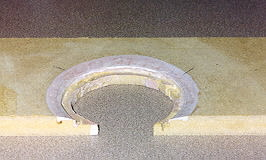
- The top mid-range was centered left/right on the baffle, the lower was aligned so that the left/right ratio was the golden mean.
- The upper mid-range was positioned as close to the tweeter as possible. In the first MTM experiment, the lower mid-range was also positioned as close to the tweeter as possible. In all the other MTM experiments the lower mid-range was positioned so that the ratio of the lower/upper mid-range surround-to-tweeter distances was the golden mean.
- Three variations of the MTM experiment with mid-range golden mean distance ratios were evaluated: mid-ranges flush-mounted, mid-ranges flush-mounted with caulk obscurations, and mid-ranges inset into rounded-over recesses.
- The left/right baffle edges (but not the top/bottom edges) were rounded over with a 3/4″ radius.
- Mortite™ caulk formed the seal between tweeters, mid-ranges and baffles.
- The microphone was at a distance of 18″ from the baffle and at the same height as each tweeter. The resulting 3.5ms anechoaic test window yields a lower test frequency of around 300 Hz.
| The Baffles | Caulked Baffle |
|---|---|
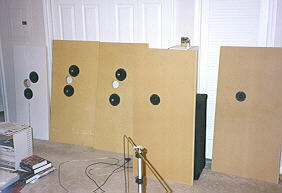 |
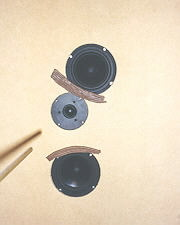 |
The photo on the left illustrates 2 of the test baffles (from left to right):
- Prototype #2 (already tested).
- Baffle with flush mounted mid-ranges equally distant from the tweeter.
- Baffle with flush mounted mid-ranges spaced from the tweeter using a golden mean ratio.
- Reference test baffle (already tested, results will be retested).
- Morel reference test baffle (not used).
The photo on the right is a close-up of the un-equally spaced mid-range baffle. Caulk has been molded to “block the view” of the tweeter so that it cannot “see” the mid-range surrounds. The concept is that sound radiating from the tweeter is bouncing off of the mid-range surround towards the microphone (listener).
| Inset Mid-ranges | Close-up |
|---|---|
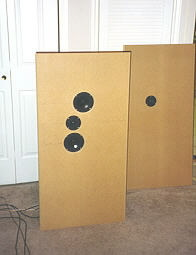 |
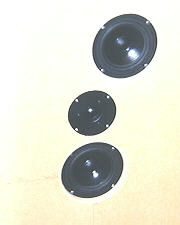 |
The fourth test baffle is illustrated above with a full and close-up shot. The mid-ranges are spaced unequally distant from the tweeter using a golden mean ratio. Instead of flush mounting, the mid-ranges are inset a little more than 1/4″. The mid-range recess is rounded over with a 1/4″ radius bit. The purpose is to inhibit the tweeter from “seeing” the mid-range surrounds by blocking the view.
Sorry, no pictures of the odd-ball, tweeter-only experiment. I’m resurecting it from the great saw-dust bin in the sky.
Test Results
Equally/Unequally Distant Mid-ranges vs. Bare Baffle
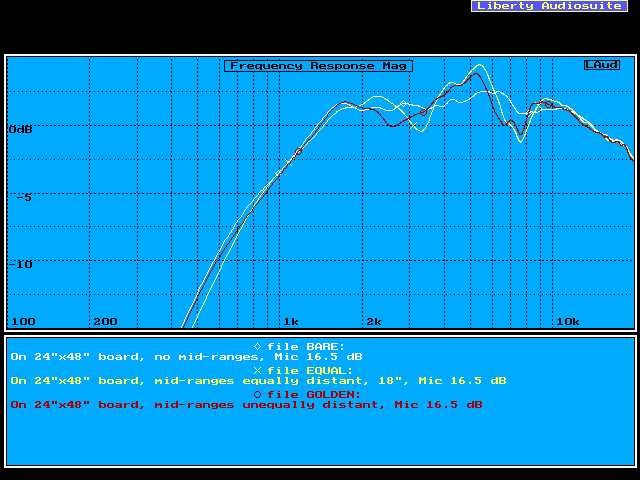
The presense of the mid-ranges is definetly detrimental to the tweeter’s response. The distance of the mid-ranges from the tweeter is a factor, but not as significant as the mid-range’s presence. The results are also similar to Prototype Cabinet #2.
Recessed Tweeter vs. Bare Baffle
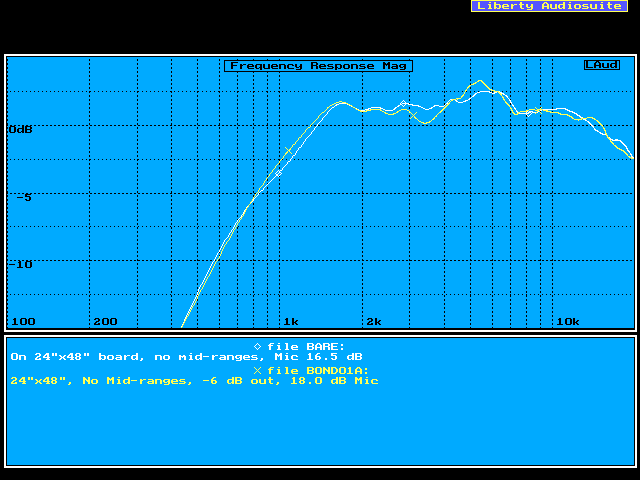
I never got further than mounting the tweeter in the recessed bondo-formed hole in the MDF board. Recessing the tweeter is not much better than mid-ranges with a flush mounted tweeter.
Caulk Barrier vs. Bare Baffle
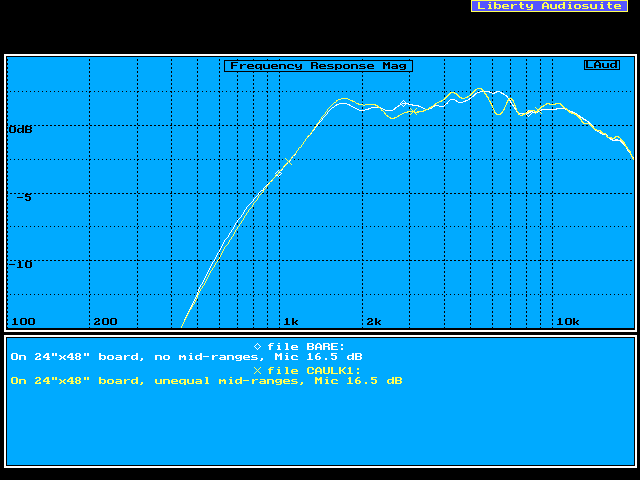
The effectiveness of just blocking the acoustic path between the mid-ranges and tweeter surprised me. I believe an important factor in this success is the angle made by the caulk with respect to the baffle surphace. It is very shallow. As a result the sound waves from the tweeter bounce towards the floor and ceiling instead of towards the microphone (listener).
The success of this baffle strategy has given me other ideas. There are so many shapes and variations on this reflector theme to try. For example, the tweeter rings that are advertised. Extend that idea and cover the whole baffle in 1/4″ thick felt or similar material. Covering the caulk with felt is also possible.
Inset Mid-ranges vs. Bare Baffle
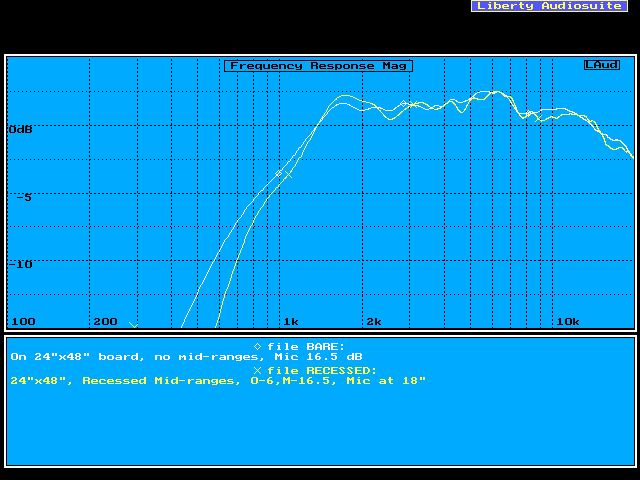
This is the ticket. Much more impressive than I was expecting after the failure with trying to recess the tweeter.
Conclusions
The small size of Speaker III precludes a large reflector like that I made using the Mortite™ caulk. Since the inset mid-range results were so good, I have elected that strategy for Prototype Cabinet #3. I may also experiment with some shallow obscurations in conjunction with insetting the mid-ranges.
Copyright © 1999 John Lipp